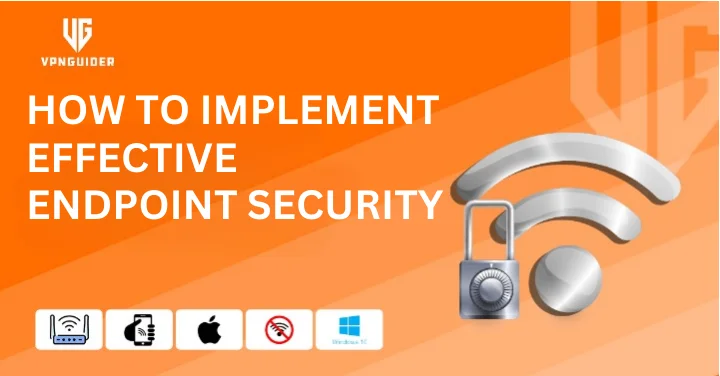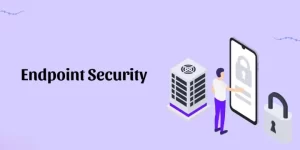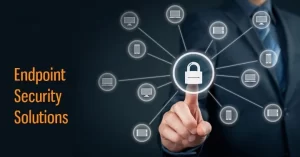
In today’s digital landscape, endpoint security has become a top priority for businesses as cyberattacks and data breaches grow in frequency and sophistication. Endpoints—such as laptops, desktops, mobile devices, and IoT devices—are often the weakest link in a network, providing malicious actors with an easy entry point. For business owners and IT professionals, implementing a robust endpoint security strategy is essential to protect sensitive data and maintain operational integrity.
What is Endpoint Security?
Endpoint security refers to the practice of securing end-user devices from cyber threats. These devices, which serve as access points to a network, are prime targets for attackers. Endpoint security solutions identify vulnerabilities, detect threats, and prevent unauthorized access, ensuring that your organization’s data and systems remain protected.
This form of security can be achieved through various methods, including implementing firewalls, antivirus software, and web application firewalls that monitor traffic coming into an endpoint device. Additionally, robust authentication protocols should also be employed as part of a comprehensive endpoint security strategy to limit who has access to the device’s resources. In addition to blocking malicious intrusions via digital means like malware or phishing attempts before they reach their endpoint targets.
By employing effective control measures such as strong passwords combined with multi-factor authentication could help prevent unauthorized users from accessing critical data stored on the machine itself or connected networks further down the line.
Why is Endpoint Security important?

Endpoint security is an essential component of any comprehensive network security strategy. It involves the protection, detection and response to malicious activities targeting endpoints (such as computers, laptops, tablets, mobile phones or other networked devices). Endpoint security solutions are designed to protect these devices from external threats such as malware, ransomware and phishing attacks.
Additionally it helps organizations prevent unauthorized access to critical data on their networks by controlling who can access what resources within that system. It also provides protection against malicious software like viruses and spyware which could be used to steal information or damage a company’s computing infrastructure. Endpoint Security also offers real-time monitoring capabilities so organizations can quickly detect and respond to new threats before they become serious risks.
In addition, endpoint security solutions offer proactive approaches for protecting endpoints from threats by using multiple layers of defense such as firewalls, antivirus programs, and intrusion prevention systems (IPS). Firewalls help control incoming traffic while IPS scans for suspicious activity on the internal networks. Antivirus programs scan files for known viruses, while intrusion prevention systems detect abnormal behavior to identify potential intruders or malicious software running on a device. Together these tools provide effective safeguards against internal and external threats at each endpoint level of your network environment, ensuring your data stays safe no matter where it travels.
FAQs
Best tips to Boost Endpoint Security 2025
Keep Operating Systems Up to Date:
Security patches are often released for operating systems to fix vulnerabilities. Keeping your OS updated is one of the best ways to boost endpoint security, as it ensures that your system is protected from exploits and cyber-attacks.
Use the Least Access Privilege Principle:
Make sure that access privileges are only given to users who need them to do their job, no more and no less. This will reduce the chances of unauthorized personnel accessing sensitive data or making changes they shouldn’t be able to make in the first place.
Use a Virtual Private Network (VPN):
A VPN can help secure connections between remote endpoints and a corporate network by encrypting traffic flowing over public networks such as Wi-Fi hotspots or those used by mobile workers on their laptops, tablets, and smartphones when traveling outside of the workplace environment.
Enable Data Encryption:
Encrypting data at rest helps protect against malicious actors gaining access should an endpoint device become lost or stolen because it makes it difficult for unauthorized parties to obtain information without knowing the passwords or encryption keys necessary for decryption.
Have a Regulated Bring Your Own Device Policy :
It’s important for organizations allowing employees bring their own devices (BYOD) into work environments to have clear policies specifying what type of devices can be used, how these devices should be secured, and what software must be installed on personal items before being connected to corporate networks. Without this policy, there’s a significant risk posed by personal devices connecting with enterprise systems not meeting minimum security requirements.
Spread Awareness Regarding Cybersecurity Challenges:
Endpoint security depends upon educating users about risks associated with various activities online, such as downloading files from suspicious websites or opening unknown emails containing links that could lead them into dangerous territory. Training sessions are regularly needed so everyone within the organization understands the importance cybersecurity principles such as using strong passwords avoiding phishing scams, etc.
Discover & Patch Vulnerabilities:
Regularly scanning all endpoints at regular intervals allows you to identify any existing weaknesses plus potential threats arising from compromised user accounts outdated applications etc. Once discovered, you must address these quickly, patching any flaws wherever possible to prevent malware infections from occurring while also changing credentials if required to limit exposure to further damage.
How to choose the best Endpoint security solutions?

Endpoint security is a crucial component of any organization’s overall security posture. However, endpoint security can be a complex and daunting task. There are several factors to consider when choosing and implementing the best endpoint security solution for your organization. In this blog article, we will discuss some of the key considerations for choosing and implementing effective endpoint security solutions.
The first consideration is the type of devices that need to be protected. Endpoints can include laptops, desktop computers, smartphones, and tablets. Each type of device presents its unique security challenges. For example, laptops are often taken off-site and used in public places, increasing the risk of theft or loss. Desktop computers are typically more stationary but may still be vulnerable to physical attacks or malware infections if not properly secured. Smartphones and tablets are usually carried with users everywhere they go and can easily be lost or stolen. These devices contain sensitive data that must be protected from unauthorized access.
The next consideration is the operating system(s) being used on the devices. The most popular operating systems are Windows, macOS, and Linux. Each operating system has its strengths and weaknesses regarding security. For example, Windows is generally considered less secure than macOS or Linux due to its large attack surface area. However, all three operating systems can be effectively secured if proper measures are taken.
The best VPN money can buy
- 6,500 servers in 78 countries
- Unblocks BBC iPlayer, HBO Max & DAZN
- Based in British Virgin Islands
- Extensive compatibility & multi-device allowance
- GPS spoofer on browser extensions
Available on :
Final Words
Endpoint security is an invaluable tool for protecting your data from malicious actors. By implementing effective endpoint security measures, you can ensure that only authorized users have access to sensitive data and prevent potential cyber threats from infiltrating your systems. Additionally, by keeping track of changes in the IT environment, monitoring user behavior, and using encryption technologies such as SSL/TLS certificates to secure data transmissions over the Internet, you can greatly improve your organization’s overall security posture.